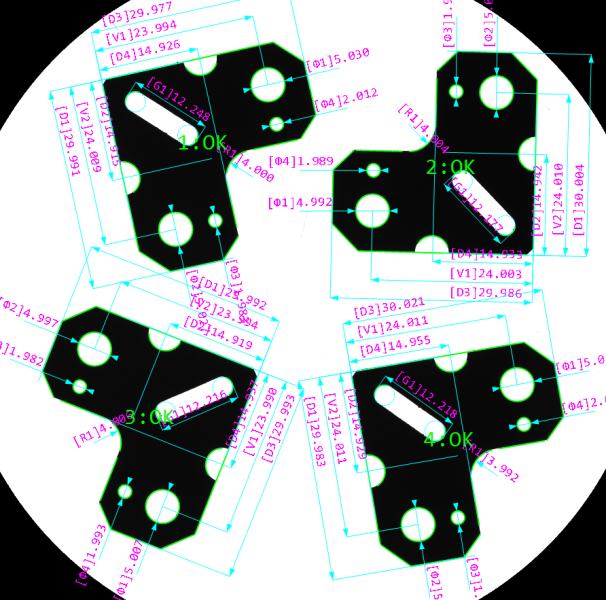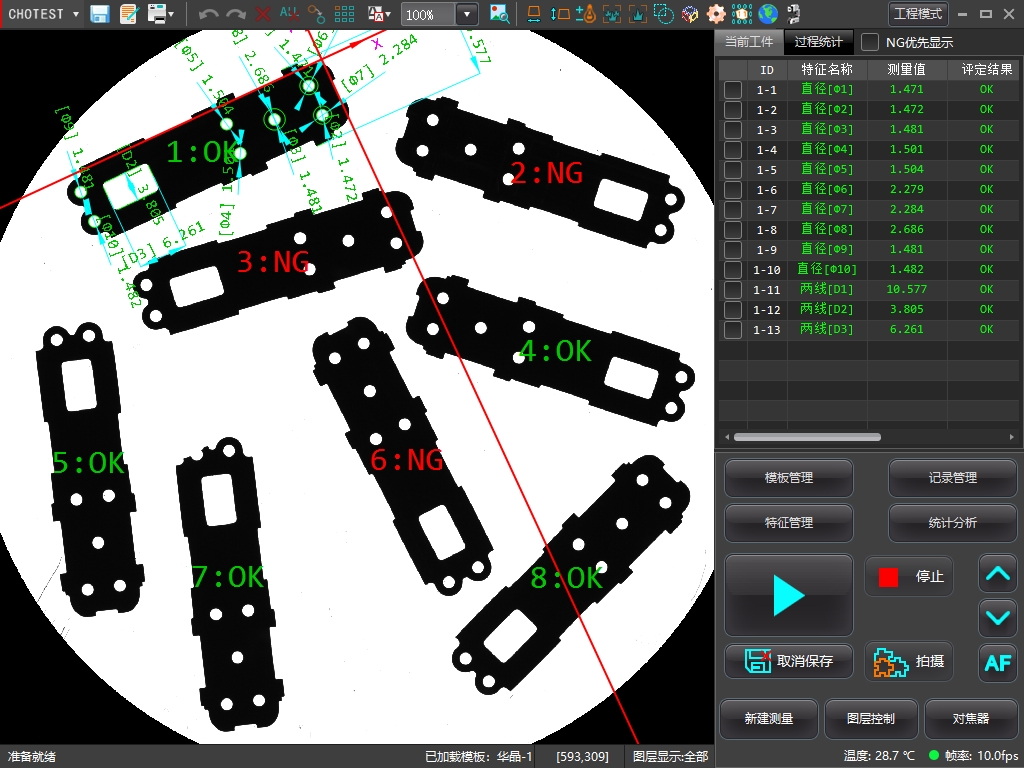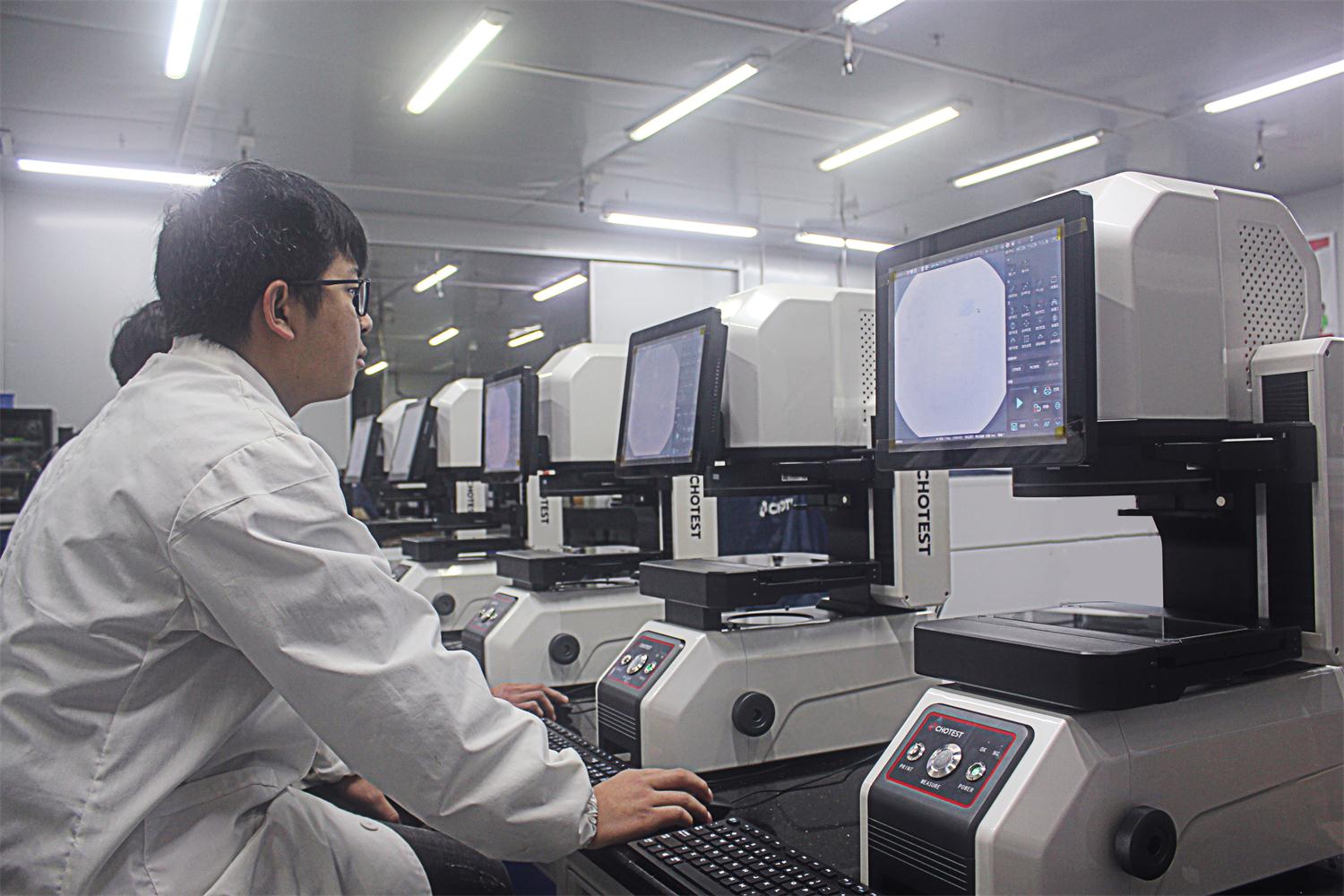2021-10-14
Pick up any shaft or threaded fastener. How are you going to check it?
An outside micrometer? A height gage or drop indicator?Optical comparator?
These are just a few of the inspection methods used by shops everywhere, every day. All are relatively simple to perform, require little investment or training, and no quality engineer would argue with their validity.
——There’s just one problem: they’re slow.
What’s the sense in taking ten or fifteen minutes to measure a part that needed but a fraction of that time to produce? Further, what about the documentation and subsequent archiving of inspection results?
In a paperless world, old-fashioned metrology comes up short.
The ROI on AOI
This is where automated optical inspection (AOI) comes in. With AOI, parts are measured in seconds, not minutes. There’s no fussing with gage blocks or micrometers, no need for aligning parts on crosshairs. AOI means setting a part on a stage, in a fixture, or between centers, and pushing a button. Anything within view of the system’s camera or image sensors is instantly measured—multiple times, in some cases—and the results collated by a computer.
The cost of quality is reduced; measurement throughput greatly increased. Best of all, there’s no more backlog in the inspection room.
In fact, a quick glance or two from an optical inspection system provides highly accurate measurements of these or virtually any other part feature, without the need for expensive hard gaging and lengthy inspection procedures. AOI is an excellent addition to most factory floors. There are no fragile probes to worry about, far fewer moving parts, and operation is about as difficult as snapping a photo with a smart phone.

(Components measurement and inspection by Chotest Image measuring machine.)
Here, there, and everywhere
If you’re concerned about the welding smoke, grinding dust, and machine tool cutting fluid mist floating about the factory, and wonder how these microscopic particles might interfere with the cameras and sensors in an AOI, don’t be. As long as the workpieces are clean and the air is safe for humans, optical inspection is perfectly suitable for shop floor use.
Consider an automotive transmission plant, where a variety of shafts are produced, each at a different stage of the manufacturing process. In this scenario, a single optical machine can be used to measure and document most everything on the production floor, and is easy enough that anyone can step up and use it with little training. This level of convenience and ease-of-use means operators will be more likely to inspect their workpieces, more frequently, without wasting time walking to the inspection lab.

(Components measurement and inspection by Chotest Image measuring machine. The defetive parts are marked as NG by the machine.)
This is why automotive, aerospace, medical, and indeed manufacturers of all kinds use AOI to measure a range of machined parts, from camshafts and threaded fasteners to hydraulic pistons and electrical components. Such systems are very flexible, and can address the needs of customers in many different industries and segments.
In the past, manufacturers relied on dedicated gaging to measure their products, but just as the industry is moving forward with more flexible manufacturing systems, there’s a need for more flexible gaging to accompany this trend. Optical measuring systems allow you to inspect a wide array of parts with a single device, simplifying the measurement process while reducing costs.
Look up to a fast pace of future, automatic, quick with software record and analysis, optical inspection system such as image measuring machine would definitely be the hitter.
If you haven’t yet checked out optical inspection systems, do yourself a favor and take a look.
